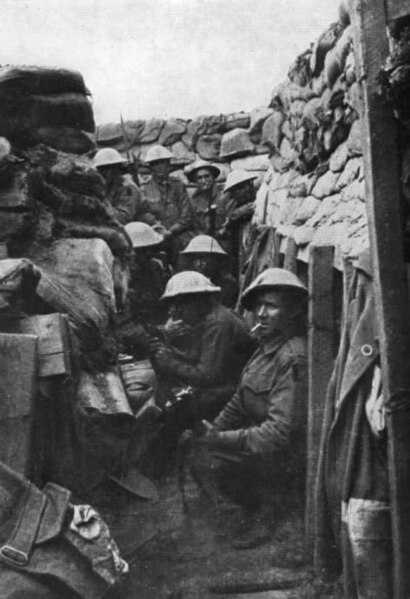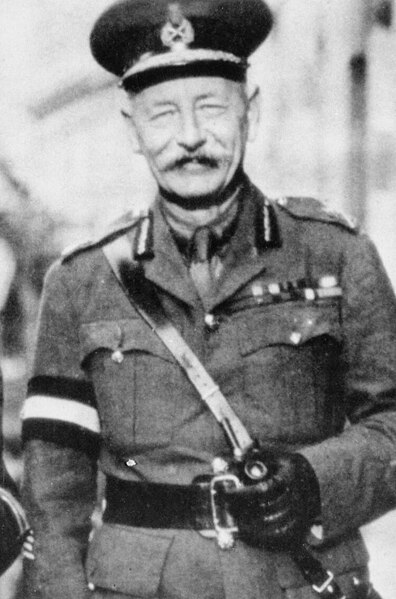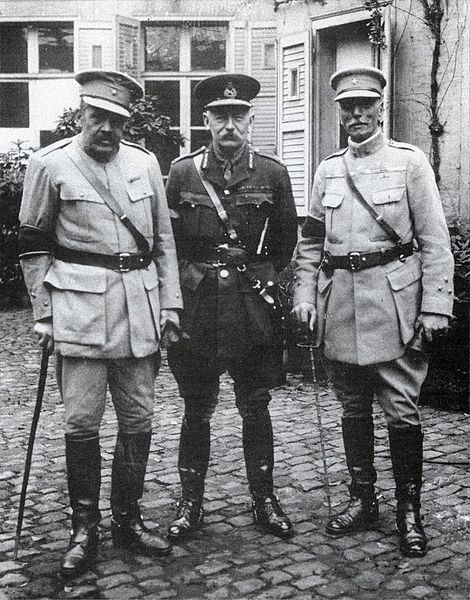The Attack at Fromelles (French pronunciation: [fʁɔmɛl] 19–20 July 1916, was a military operation on the Western Front during the First World War. The attack was carried out by British and Australian troops and was subsidiary to the Battle of the Somme. General Headquarters of the British Expeditionary Force had ordered the First Army and Second Army to prepare attacks to support the Fourth Army on the Somme, 50 mi to the south, to exploit any weakening of the German defences opposite. The attack took place 9.9 mi from Lille, between the Fauquissart–Trivelet road and Cordonnerie Farm, an area overlooked from Aubers Ridge to the south. The ground was low-lying and much of the defensive fortification by both sides consisted of building breastworks, rather than trenches.
Panorama of Fromelles, 1914.
A German strongpoint in the Fromelles salient, July 1916.
Troops of the 53rd Australian Battalion, only three of the men survived the battle, all wounded.
Airco DH.2 at Beauvel, France.
General Sir Richard Cyril Byrne Haking,, was a senior British Army officer who is most notable for being the commander of XI Corps during the majority of the First World War.
Haking in 1918
Generals Tamagnini and Gomes da Costa, together with General Haking.
The Mayor of Lille and Lieutenant-General Richard Haking, GOC XI Corps, saluting the British national anthem outside the "Préfecture du Nord" at Lille, 18 October 1918. Note the firemen keeping back the crowd.
General Haking (4th from right) as member of the Armistice Commission in Spa.








